Standing Advice
Correct Standing: why it matters
And why your headaches may be caused by your feet
Our feet are working very hard. Not only are they getting us places, they are carrying our entire body weight and they are fundamentally involved in keeping our bodies upright and therefore healthy.
Yet we often neglect or downright abuse them by confining them to tight spaces, cushioning them so they become weak and can’t do their job properly, or forcing them into unnatural positions by using one-size-fits-all insoles with questionable arch supports. We squeeze them into tiny, pointy toe boxes. We strap them into high heels which force most of our body weight onto our poor toes. And we moan about them when they show their displeasure by developing problems such as flat feet, plantar fasciitis, generalised aches and pains, bunions, corns, or toe deformities such as hammer toes. Over- / under-pronating, ankle instability, knee pain, hip pain, or back/neck problems often have their origin in the feet. Remember: everything in the human body is connected to everything else…
Isn’t it time we took better care of our feet? So that they can move properly, support our bodies properly, and help us stand tall and strong?
We have already discussed how most body problems are either exacerbated or alleviated by the way we sit or sleep. In this section we will look at what you stand on and what it can do to your body. We will share the good, the bad, and the ugly around correct and incorrect footwear.
Keep reading and you will learn what to look for next time you buy shoes!
If you came to see us with acute or severe pain, it is crucial that you follow our advice about adequate footwear during the initial phase of your care. Incorrect footwear can destabilise your body and therefore greatly increase the pain levels which can cause unnecessary suffering! This may mean avoiding your favourite shoes for a while. As your body stabilises, you might be able to go back to wearing them again!
Let’s start by looking at the human foot
The human foot has 26 bones, 33 joints, 107 ligaments, 19 muscles and tendons. The 52 bones in your feet make up about 25 percent of all the bones in your body! Your feet are primarily shock absorbers. With every step you take, they carry your body weight and hold you upright against gravity. Feet are designed to do this with the least amount of effort and energy required. Your feet have arches: longitudinal and transverse ones. These arches and the connected soft tissues (muscles and ligaments) help absorb the impact of walking or running. The force which is involved in your foot hitting the ground is distributed evenly across the foot. The arches naturally move when you take a step – they stretch and flatten out a little bit before bouncing back up. The energy stored in the soft tissues can act as a spring, helping you bounce off the ground as you take the next step. This reduces the energetic cost of walking and, in particular, running, where much higher forces are going through the body.



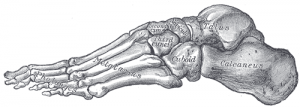
Nothing in the human body ever works in isolation. Your feet are connected to your ankles; your ankles to your knees; your knees to your hips; your hips to your pelvis and eventually your entire spine. If your feet are not working correctly because there is a mechanical problem, chances are your entire skeletal frame is suffering. And vice versa, if your spine is twisted up, your feet carry the brunt of it.
According to the NHS, the average person only walks around 3,000-4,000 steps per day. Health experts recommend we walk 10,000. Either way, that’s a lot of walking for our feet to do. Somehow we have developed into a culture that thinks it is “normal” to have feet that hurt at the end of a long day. Guess what: feet weren’t designed that way originally!
What we stand on and why it matters
What we stand on can have a tremendous effect on the alignment of our entire bodies, and ultimately on how our bodies function. In other words, your headaches may be caused by your feet.
Unfortunately, most of the time we pay little to no attention to what’s underneath our feet. The last time you bought shoes, your main concern was probably fashion-related and price-related rather than what these shoes would do to the alignment of your spine.
So let’s look at various types of shoes – their shape on the outside and inside, their built-in accessories (arch supports, cushions, gel insoles, memory foam insoles, or “cloud-steppers”). What are they supposed to do? What do they really do? And how does your body respond to all these things? What does a “good” shoe look like? What does a “bad” shoe look like?
Common misconceptions about what shoes do to feet:
Misconception #1: Your feet are faulty and need “help” because they can’t absorb the shock of hitting the ground.
Faulty solution: Built-in shock absorption, gel insoles, Memory Foam insoles, padded heel supports, “cloud-steppers”, or other forms of cushioning or “softening the impact” of your foot hitting the ground.
The reality: Your feet were designed to absorb the shock of walking or running. If your feet (and spine) are working correctly from a mechanical point of view, walking or running is no problem. Your feet don’t need to be cushioned. All these cushioning devices cause your feet to sink in. They can lead to foot misalignments which can then lead to ankle, knee, hip, and spinal misalignments.
Look at professional athletes. The largest number of world records in track and field and road running are held by Africans. They grew up walking barefoot and many of them started running barefoot. Some of them have even run barefoot at the Olympics. Their feet are strong. Their feet can do their jobs naturally, stretching and flexing in the arches as they hit the ground, as they absorb the shock forces going through them.
The reason for cushioning: thick outer soles
The reason for cushioning came about because the shoe industry started designing shoes with really thick and rigid outer soles. The idea was to “protect” feet from rough terrain.
Rigid outer soles lead to sensory deprivation. You can’t tell what’s going on underneath your feet, whether you are walking on soft ground or concrete. And you don’t know how hard you hit the ground. Your heel tends to hit the ground HARD. This can cause all kinds of foot problems over time. Barefoot walkers, by contrast, tend to hit the ground with the middle or the ball of their feet first, then push off through the heel.
Unfortunately, this kind of sensory deprivation starts with children’s shoes. “baby’s first shoes” or such brands are usually OK: soft, pliable, big enough to allow the toes to spread out, and soft enough to allow babies to feel the ground beneath their feet. As soon as we hit the toddler years though, thick and rigid soles are added to shoes, preventing kids’ feet not just from experiencing the tactile input of walking on different surfaces (grass vs concrete vs carpet) but from moving naturally. Then soon enough kids’ shoes add cushioning, insoles, arch supports, narrow toe-boxes, and even high heels!
Misconception #2: your feet are faulty or misaligned and this needs to be rectified.
Faulty solution: insoles (whether built-in or custom-made) are supposed to put the foot into a more anatomically “correct” position. The goal is to fix problems such as flat feet, over- or under-pronating, or ankle instability by “holding” or “pushing” various parts of the foot into “better positions”.
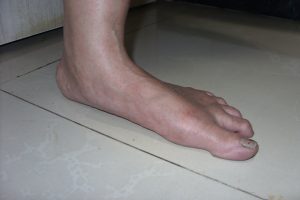

Images: flat feet, collapsed arches, over-pronating at the ankle.
The reality: the foot alignment might indeed change because of these devices. But neither the shoe industry nor the orthotics industry looked at what these devices do to the rest of the body in terms of joint alignment. While the foot itself might look aligned, the twist has often simply been translated to another location: the knee, the hip, the pelvis, or the spine. When Advanced Biostructural Correction™ was designed, Dr. Jesse Jutkowitz took x-rays of people with or without various types of shoes. He closely studied what different shoe shapes did to people’s feet and to their entire spines.
Observations among professional sports teams in the US (NBA players) show a strong correlation between an increase in foot and ankle injuries and the timeline of when sports shoe manufacturers started creating built-in arch supports. If professional athletes now know that built-in arch supports are bad for them, why do you think built-in arch supports are good for you in your running shoes or your work shoes?
In order for feet to move naturally and to absorb shock forces correctly, the arches of the foot need to move, stretch, and flatten just a bit. Sticking a big arch support underneath the arch prevents this natural movement of the foot. It holds the foot in an unnatural position. Forces don’t get absorbed or distributed as they should. The entire mechanical set-up of the foot (and by extension, knee, hip, pelvis, and spine) changes. This is why arch supports are generally a bad idea.
Foot shape: good vs. bad
We have already mentioned African athletes who grew up walking and running barefoot. They have strong feet. All habitually barefoot-walking populations generally have strong, correctly aligned feet without our all-too-common foot problems. Look at the pictures below, they show the feet of an indigenous man who grew up walking barefoot, and by comparison, the feet of a business man.


Feet are naturally supposed to be almost triangular in shape, with the forefoot and toes being much wider than the heel area. The toes are naturally spread apart. When walking, the toes fan out – giving maximum support to the body by distributing the ground reaction forces evenly. This means walking with minimum energy cost, which is exactly what the body wants.
Modern shoe shapes often squeeze the feet into tiny toe-boxes, preventing the toes from flaring out while walking. This is not just a problem for women – see the picture on the right, which shows the feet of a modern businessman. Compare the alignment of the toes, as well as the overall width of the forefoot and toes to the heel area.
An extreme form of foot misalignment is the ancient Chinese practice of foot-binding. The idea was that women should have tiny feet – it was considered fashionable. Starting in early childhood, the feet would get bound tightly, causing the bones to deform and eventually break. The ideal length of an adult woman’s foot was considered a mere 4 inches or 10cm. Look at the deformed foot, and the grossly misaligned bones in the x-ray.


While this is an extreme example of course, modern-day shoes do exactly the same thing to our poor feet. Narrow, pointy toe-boxes squeeze the toes together. Compare your foot to that of the indigenous man in the picture above. Look at the alignment of your toes – are they flared out or squeezed together? Are there gaps between them or do they meet or perhaps even overlap as hammer toes or does the big toe bend with a bunion?


Image (L): bunion / hallux valgus deformity
Image (R): hammer toes
Shoe-shopping the ABC™ way
Or: how to find the perfect shoe for YOU
Good shoes support your body. They make your body more stable from a mechanical point of view. Most likely you came into our office because you suffer from some form of pain or postural problem. Your footwear can make or break your journey out of pain and back to health.
Bad shoes:
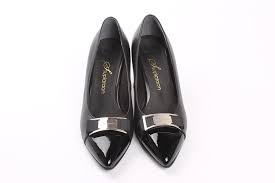
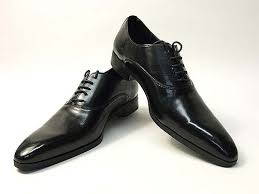
Bad: Narrow toe-box, squeezing the toes

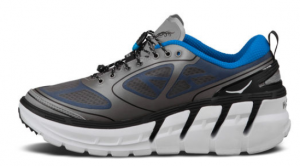
Bad: Thick or rigid outer sole, allowing no bend/give while walking and no sensory input

Bad: Dipping in the heel area. This is important. If your shoe dips in the heel, your body automatically rocks back onto the heels. This instantly leads to misalignments of the pelvis and spine.

Bad: rocking shoes. They cause the foot to rock back, misaligning the pelvis and spine.

Likely bad: foam-like interior, likely too soft so the foot sinks in
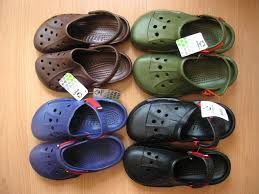
Really bad: way too soft, “cuddling” your feet, causing the muscles, ligaments, and bones to become very weak. Comfortable doesn’t always mean good for you!
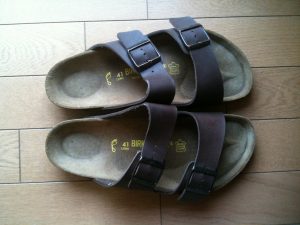
Really bad: look at that big dip in the heel! And the shaped area around the toes. Birkenstocks also often have built-in arch supports. And they are too rigid. Comfortable doesn’t mean good for you!
Birkenstocks, crocks, and certain types of Sketchers are just about the only shoes that cannot be fixed. Sorry! Most other shoes can be fixed though.
In summary: what to avoid:
- Narrow toe-boxes
- Thick or rigid outer soles
- Any sort of “shape” on the inside is generally a bad idea. From arch supports to dipping in the heel.
- Built-in shock absorbers such as cushioned portions, “cloud-steppers”, gel or (Memory) foam insoles. Anything with the word “air” in it is generally a bad idea!
- Built-in arch supports
- Built-in shock absorbers
Talk to us – we are more than happy to check out your footwear to ensure it is stabilising your body, not breaking it down. We want you to progress on your journey towards health without any set-backs!
Good shoes:
- Wide toe-box which doesn’t squeeze the toes and allows them to fan out with every step
- Flat on the inside
- Not dipping of the heel
- No arch support
- Flexible, bendy material, allowing the foot to flex as it moves
- A bit of a heel on the outside is generally fine
Often our patients talk about wearing “flat” shoes. They mean “flat” on the outside – i.e. not having a heel. A bit of a heel on the OUTSIDE of the shoe is generally fine. When we say “flat shoes”, we mean flat on the INSIDE. No lumps, bumps, arch supports, or dips. Even a sewn-in label that sticks out a bit in the heel area can be problematic.
What about high heels?
High heels can be acceptable, or very bad. It all depends on the shape of the slope. If the slope continues steeply towards the heel area, chances are you can get away with it. If the slope levels out towards the heel area, it’s a no-go as it causes the same mechanism as a dip in the heel in flat shoes. Look at the pictures to see what we mean:

Look at how the angle of the slope changes. This is bad because it causes your heel to dip, rocking your body backwards and throwing your pelvis and low back forward.
Here the angle of the slope hardly changes. You can get away with these for a night out.

This is what a foot looks like inside a high heel. Ouch for those toes! The misalignment of the foot translates into a misalignment of the knee, hip, pelvis, and spine. At the end of the day, it is your decision whether an occasional night out in high heels or wearing them daily is worth the results…
We can help!
We are here to help. If you are in doubt, talk to us. We are more than happy to check your footwear to make sure it is good for your body! Most shoes are fixable!
Feel free to bring in your favourite pairs of shoes, your work shoes or walking boots, your golfing or workout shoes. We will check them to make sure they support your body correctly! We need to see you in your shoes to offer you the best possible advice on whether they are making your body more stable or less stable. The exact type of support needs to be customised to YOUR body. Here are some of the supports we use:
- A dip in the heel might require a simple heel chip or heel lift to level out the dip. Heel chips and heel lifts are available from our office.
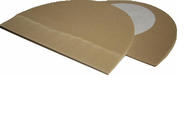

- Sometimes the insole is salvageable by cutting out any arch support areas.
- Sometimes we recommend removing insoles and replacing them with flat, leather, cut-to-size insoles instead.
- Sometimes there are other things that we might need to do to customise the best possible support for your body.
Each person, and each pair of feet, is different!
So what shoes are best for the body?
In our experience, barefoot or minimalist shoes which mimic barefoot walking are usually the best because they permit the feet to work properly while allowing sensory input from the type of ground you walk on.
In our experience, Vivo barefoot shoes https://www.vivobarefoot.com/uk are the generally the best because they are flat, have wide toe-boxes, and have thin, flexible outer soles. Xero sandals https://xeroshoes.co.uk/ are also very good for the summer. If in doubt, talk to us and we can advise you.
If you are interested in transitioning to barefoot shoes, please start out SLOWLY. Walk barefoot round the house first. Start with 5mins at a time, gradually increasing the time. Your feet need to re-learn the process of walking, especially if you have been using Birkenstocks, Crocs, or orthotics for a long time. Your muscles and tendons need to strengthen, and the bones need to get used to supporting your body weight. This can take time. If you were to put on barefoot shoes and wear them for a full day or go long-distance hiking immediately, you would injure your feet.
For more information:
Our colleague Dr Jeff Aberle of www.aberlechiropractic.com has made a video which explains how foot problems get created – from plantar fasciitis to over- or under-pronating. He demonstrates how foot problems misalign other parts of the body. Check it out, it is well worth those 24 minutes of your time!
If you are suffering from any kind of foot or ankle problem or are looking for advice on the best possible footwear for YOUR body, schedule a consultation with one of our practitioners!







